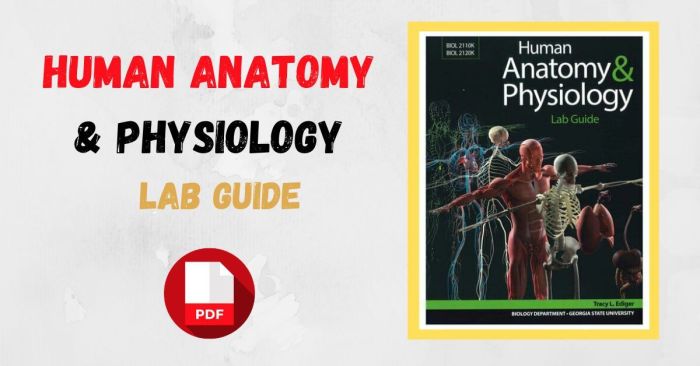Lab exam 1 anatomy and physiology – Embark on an educational journey with Lab Exam 1: Anatomy and Physiology, a meticulously crafted guide that empowers students with the knowledge and strategies to excel in their academic endeavors. This comprehensive resource provides an in-depth exploration of key concepts, laboratory techniques, and exam preparation strategies, ensuring a thorough understanding of the human body’s intricate systems.
Delving into the realm of anatomy and physiology, this guide unveils the fundamental principles governing the structure and function of the human body. Through detailed explanations, illustrative examples, and practical advice, students gain a comprehensive understanding of the major organ systems, including the skeletal, muscular, nervous, and cardiovascular systems, fostering a deep appreciation for the interconnectedness of the human body.
Introduction to Lab Exam 1: Anatomy and Physiology
Lab Exam 1 in an anatomy and physiology course provides an opportunity for students to demonstrate their understanding of the basic concepts and laboratory techniques covered in the first part of the course. The exam assesses students’ knowledge of key anatomical structures, physiological processes, and laboratory procedures.
The exam typically consists of a combination of multiple-choice questions, short answer questions, and laboratory-based exercises. The multiple-choice and short answer questions test students’ knowledge of key concepts and terminology, while the laboratory-based exercises require students to apply their knowledge to real-life scenarios.
Key Concepts and Terminology
- Anatomy: the study of the structure and form of the body
- Physiology: the study of the function of the body
- Cell: the basic unit of life
- Tissue: a group of cells with a similar structure and function
- Organ: a group of tissues that work together to perform a specific function
- System: a group of organs that work together to perform a complex function
- Homeostasis: the maintenance of a stable internal environment
Anatomy and Physiology Systems: Lab Exam 1 Anatomy And Physiology
Skeletal System
The skeletal system provides support, protection, and movement for the body. It consists of bones, joints, and cartilage.
Muscular System, Lab exam 1 anatomy and physiology
The muscular system allows for movement of the body. It consists of muscles, tendons, and ligaments.
Nervous System
The nervous system controls and coordinates the body’s activities. It consists of the brain, spinal cord, and nerves.
Cardiovascular System
The cardiovascular system transports blood throughout the body. It consists of the heart, blood vessels, and blood.
Laboratory Techniques and Equipment
- Microscope: used to magnify cells and tissues
- Dissection kit: used to dissect animals and organs
- Stethoscope: used to listen to the heart and lungs
- Sphygmomanometer: used to measure blood pressure
- Electrocardiogram (ECG): used to record the electrical activity of the heart
Study Strategies and Exam Preparation
To prepare for Lab Exam 1, students should:
- Review lecture notes and textbook readings
- Practice answering multiple-choice and short answer questions
- Attend laboratory sessions and practice using the equipment
- Form study groups to discuss concepts and quiz each other
- Get a good night’s sleep before the exam
Exam Day Procedures
On the day of the exam, students should arrive on time and bring the following materials:
- Writing utensils
- Calculator
- Lab coat
- Safety glasses
Students should follow the instructions of the instructor during the exam and refrain from talking or using electronic devices.
Helpful Answers
What is the purpose of Lab Exam 1 in an anatomy and physiology course?
Lab Exam 1 assesses students’ understanding of the fundamental concepts and principles of anatomy and physiology, ensuring a solid foundation for further studies in the field.
What types of questions can I expect on Lab Exam 1?
Lab Exam 1 typically includes a variety of question formats, such as multiple choice, short answer, and essay questions, testing students’ knowledge of key concepts, terminology, and laboratory techniques.
How can I effectively prepare for Lab Exam 1?
Effective preparation involves reviewing course materials, practicing laboratory skills, and utilizing study strategies that enhance retention and recall. Additionally, seeking clarification from instructors and utilizing available resources can greatly contribute to success.

